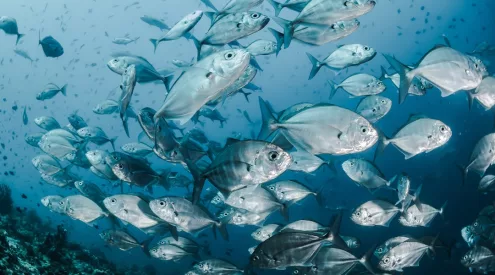You could say that porcupines are the clubbers of the animal world. They come alive at night, are attracted by loud drumming and can be taught to shuffle in time to a beat. Add quills that resemble the hairstyles of punk rockers and you have a creature which makes many others look boring.
Humans have long been fascinated by porcupines and there are many different stories about how they came to have quills. One of the stories from Africa is told by the Tonga people of the Zambezi River Valley.
Long ago, the porcupine was quite vain because he had a beautiful, glossy coat, the envy of many other animals. One day, the jackal decided to teach him a lesson. He showed the porcupine a thorny thicket close by.
‘Just beyond the thicket lives a powerful witch doctor who can make your coat even more beautiful,’ he said. ‘But if you go, don’t ruin your coat with all those thorns; leave it with me.’ The porcupine thought about it for a minute, then took off his coat. He couldn’t wait, so he ran into the thorny bush – only to get stuck. No amount of twisting and turning could free him and he became even more stuck on the thick spines. After what felt like hours, the porcupine finally hauled himself backwards to get out of the bush, which was very painful. He was free, but a lot of the thorns and spikes were lodged deep into his skin.
The jackal laughed. ‘Now you can’t wear your coat anymore!’
So from that day on, the jackal wore the porcupine’s beautiful shiny coat and the porcupine only dared come out at night, because all the other animals teased him about his spiny ensemble.
Now you know why you should look out for these spined creatures after dusk, when they start foraging for food. They have huge appetites and can be wasteful eaters, often taking only one bite from something such as a root, fallen fruit, pumpkin, vegetable or geophyte. Not the kind of guest you’d want at a dinner table, porcupines hold food between their forelegs, then chew aggressively and noisily (their munching can be heard from several metres away). They can bite through almost anything and, as with all rodents, their incisors are ever-growing, so they sometimes gnaw on bones and bark to wear them down.
Porcupines live in abandoned aardvark holes or crevices and caves, although they’re perfectly capable of digging their own holes. They’re found in pairs or in family groups and some, like humans, mate for life and copulate even when there’s no possibility of conception.
When a female prorcupine falls pregnant, one or two porcupettes are born after about eight weeks, eyes wide open and with quills that will harden within 20 to 40 minutes, so it can fend for itself.
Porcupines don’t ‘shoot’ their quills, a common misconception. Instead, they can erect them at will to make themselves look bigger and lunge backwards to attack, leaving their spiny weapons in the flesh of an attacker (don’t worry, they aren’t left defenseless as new quills grow back). Quills are covered in backward-pointing scales which help work them into the flesh of an attacker and it can prove fatal if a quill hits a vital organ or an infection develops in a septic wound – something that makes even big predators such as lions and leopards wary of them.
However, porcupines don’t live without threats. They’re killed by farmers because they can cause huge crop damage and are still hunted for their flesh, which apparently yields crispier crackling than pork.
Sources:
- The Pocket Book of Animals by John Lloyd and John Mitchinson (Faber and Faber, 2009).
- When Lion Could Fly and Other Tales from Africa by Nick Greaves and illustrated by Rod Clement (Struik, 2000).
















